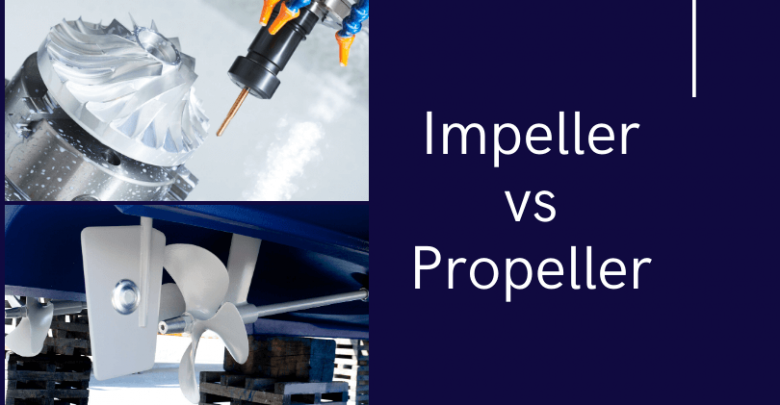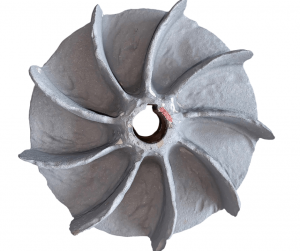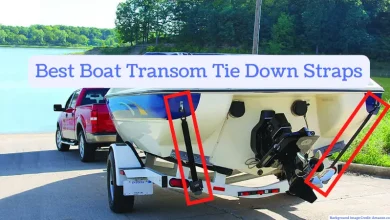Impeller vs propeller – Must know differences before purchase

If you have studied motion and remember the basic mechanisms, you won’t get confused between an impeller and a propeller. Those who haven’t often wonder what these two are and how they are different.
The reason why there’s so much confusion is that the function is almost the same – providing thrust. How they go about it is different, and that’s what sets them apart significantly.
In our article, we are going to discuss the difference between impellers and propellers in simple words so that it is easy to understand and remember. Let’s begin –
Impeller vs propeller – The biggest difference
Impellers are rotors that either increase or decrease the pressure and flow of a liquid. They can work with gases as well. You must note here that the decrease in pressure is only for turbines. In almost all other cases, they work to increase the pressure.
A propeller, on the other hand, is nothing but a fan. This fan converts rotational motion into thrust. Through this, it moves whatever it is attached to, such as an aircraft or a boat.
Types of Impeller
A well-designed impeller will increase efficiency and performance. There are quite a few types that have different uses. Let’s take a look at the basic ones:
- Open impeller: The vanes of an open impeller are free. They are quite weak and are ideal only for small pumps that handle suspended solids.
- Semi-open impeller: These impellers have free vanes only on one side. On the other side, they are closed. They work well with liquids and medium-diameter pumps. If you are purchasing these, you should ensure that there’s enough clearance between the casing and the impeller.
- Closed impeller: As the name indicates, these impellers are closed on both sides. They have a single casing within which you will see the vanes. They are highly efficient and are required for huge pumps.
Impellers vary in blades and suction as well. You have radial, forward curved, and backward curved blades along with single and double suction options.
Types of Propeller

There are quite a few types of propellers, and we are going to discuss them taking aircraft into consideration.
- Fixed-pitch: In these propellers, you will see that the blade is made into the propeller itself. You cannot change the blade angle in this case. Single-engine aircraft usually have fixed-pitch propellers, and they are either made of wood or metal.
- Controllable pitch: Unlike fixed-pitch propellers, controllable pitch ones allow a change in the blade angle during flight. The only thing you should remember here is that you will only have certain angles to adjust to. The minimum and maximum settings are usually prefixed.
- Reverse pitch: These propellers let you change the angle to a negative value during flight. They work to enable thrust in the opposite direction. This is why they allow negative value. Once the aircraft lands, reverse pitch propellers reduce the speed and bring it to a stop without applying too much tension on the brake.
- Ground adjustable: These are almost like fixed-pitch propellers in that you can’t change the blade angle during flight. However, you can adjust it when it is on the ground (not moving).
- Feathering: Feathering propellers are most commonly used in multi-engine aircrafts. You can change the blade angle to around 90 degrees and not more. They are useful in reducing propeller drag in case an engine fails.
- Constant speed: These propellers speed up or slow down based on the flight’s movement. As it goes up, the propellers slow down. As it comes down, they speed up.
We hope this information has helped you understand the difference between impellers and propellers. If you have any other doubts, please feel free to comment and let us know.

